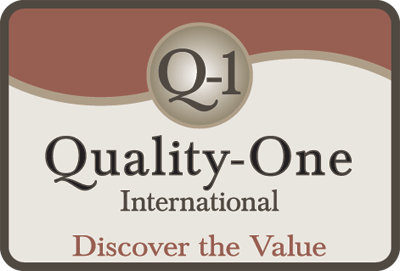COQ
– Cost of Quality –

Introduction to Cost of Quality (COQ)
The business climate is becoming increasingly more competitive. There are multiple options available to the consumer for nearly every product on the market. Companies must stay price competitive to survive. The top performing companies set themselves apart from the competition by listening to the voice of the customer and providing products that meet the customer’s requirements while maintaining a high level of quality and dependability. These companies measure Cost of Quality and use the information gained to their advantage. The principle of Cost of Quality is similar to a commercial that aired years ago on television that advertised oil filters. The tag line was “Pay Me Now or Pay Me Later”. The message was that preventive maintenance of your vehicle could prevent more costly repairs down the road. Cost of Quality is much the same. An organization can choose to invest in upfront quality costs to reduce or prevent failures or pay in the end when the defect is eventually discovered by the customer. In too many cases organizations choose the latter. Product failures can result in increased warranty costs and possibly even product recalls. The impact to the bottom line can be devastating. In addition, there are the hard to measure costs incurred through loss of brand equity and possible decline in future sales. Cost of Quality can have an immense impact on a company’s bottom line, positive or negative.
What is Cost of Quality (COQ)
Cost of Quality is a methodology used to define and measure where and what amount of an organization’s resources are being used for prevention activities and maintaining product quality as opposed to the costs resulting from internal and external failures. The Cost of Quality can be represented by the sum of two factors. The Cost of Good Quality and the Cost of Poor Quality equals the Cost of Quality, as represented in the basic equation below:
CoQ = CoGQ + CoPQ
The Cost of Quality equation looks simple but in reality it is more complex. The Cost of Quality includes all costs associated with the quality of a product from preventive costs intended to reduce or eliminate failures, cost of process controls to maintain quality levels and the costs related to failures both internal and external.
Why Implement Cost of Quality (COQ)
Effective use and implementation of Cost of Quality methodology enables an organization to accurately measure the amount of resources being used for Cost of Good Quality and Cost of Poor Quality. With this valuable information the organization can determine where to allocate resources to improve product quality and the bottom line. To further illustrate the value of cost of quality, review the following example. The name of the company has been changed but the content represents actual events and results.
Alpha Company once measured Cost of Quality as the amount of warranty cost versus total sales. This method only examined the Cost of Poor Quality. This data did reveal a problem area in the facility. It was discovered that customer part shortages originating from one work cell were resulting in warranty costs of over $400,000 in one year. A team was formed to investigate and perform Root Cause Analysis (RCA) of the shortages and a plan was developed to redesign the work cell for an estimated cost of $60,000. With management approval, the work cell was redesigned with a revised layout, pick bins, dedicated locations for all the parts, process controls were defined and implemented and several additional improvements were made. The changes reduced tact times and the number of operators required for the process. This provided resources for the addition of quality technicians to regularly audit and maintain the process on all shifts. Within the first year of operation, shortages were reduced by 50% equaling a $200,000 reduction in warranty costs. The project resulted in a positive impact on the bottom line of $140,000 in the first year. Alpha Company has since implemented processes to measure and reduce scrap, improved process controls and introduced new quality metrics throughout the organization. They are now actively measuring and evaluating both the cost of good quality and poor quality.
In the example above, the Cost of Poor Quality (CoPQ) was having a major impact on the bottom line. Through an investment in the Cost of Good Quality (CoGQ), Alpha Company achieved a significant reduction in the Cost of Quality. There are opportunities for improvement in processes at most organizations. It has been estimated that the Cost of Quality usually amounts to between 15-40% of business costs. The goal of implementing Cost of Quality methodology is to maximize product quality while minimizing cost. Cost of Quality methodology provides the detailed information that management needs to accurately evaluate the effectiveness of their quality systems, identify problem areas and opportunities for improvement.
How to Measure Cost of Quality (COQ)
The methods for calculating Cost of Quality vary from company to company. In many cases, organizations like the one described in the previous example, determine the Cost of Quality by calculating total warranty dollars as a percentage of sales. Unfortunately this method is only looking externally at the Cost of Quality and not looking internally. In order to gain a better understanding, a more comprehensive look at all quality costs is required.
The Cost of Quality can be divided into four categories. They include Prevention, Appraisal, Internal Failure and External Failure. Within each of the four categories there are numerous possible sources of cost related to good or poor quality. Some examples of typical sources of Cost of Quality are listed below.
The Cost of Good Quality (CoGQ)
- Prevention Costs – costs incurred from activities intended to keep failures to a minimum. These can include, but are not limited to, the following:
- Establishing Product Specifications
- Quality Planning
- New Product Development and Testing
- Development of a Quality Management System (QMS)
- Proper Employee Training
- Appraisal Costs – costs incurred to maintain acceptable product quality levels. Appraisal costs can include, but are not limited to, the following:
- Incoming Material Inspections
- Process Controls
- Check Fixtures
- Quality Audits
- Supplier Assessments
The Cost of Poor Quality (CoPQ)
- Internal Failures – costs associated with defects found before the product or service reaches the customer. Internal Failures may include, but are not limited to, the following examples:
- Excessive Scrap
- Product Re-work
- Waste due to poorly designed processes
- Machine breakdown due to improper maintenance
- Costs associated with failure analysis
- External Failures – costs associated with defects found after the customer receives the product or service. External Failures may include, but are not limited to, the following examples:
- Service and Repair Costs
- Warranty Claims
- Customer Complaints
- Product or Material Returns
- Incorrect Sales Orders
- Incomplete BOMs
- Shipping Damage due to Inadequate Packaging
These four categories can now be applied to the original Cost of Quality equation. Our original equation stated that the Cost of Quality is the sum of Cost of Good Quality and Cost of Poor Quality. This is still true however the basic equation can be expanded by applying the categories within both the Cost of Good Quality and the Cost of Poor Quality.
- The Cost of Good Quality is the sum of Prevention Cost and Appraisal Cost (CoGQ = PC + AC)
- The Cost of Poor Quality is the sum of Internal and External Failure Costs (CoPQ = IFC + EFC)
By combining the equations, Cost of Quality can be more accurately defined, as shown in the equation below:
COQ = (PC + AC) + (IFC + EFC)
One important factor to note is that the Cost of Quality equation is nonlinear. Investing in the Cost of Good Quality does not necessarily mean that the overall Cost of Quality will increase. In fact, when the resources are invested in the right areas, the Cost of Quality should decrease. When failures are prevented / detected prior to leaving the facility and reaching the customer, Cost of Poor Quality will be reduced.
Learn More About Cost of Quality (COQ)
Quality-One offers Quality and Reliability Support for Product and Process Development through Consulting, Training and Project Support. Quality-One provides Knowledge, Guidance and Direction in Quality and Reliability activities, tailored to your unique wants, needs and desires. Let us help you Discover the Value of COQ Consulting, COQ Training or COQ Project Support.

